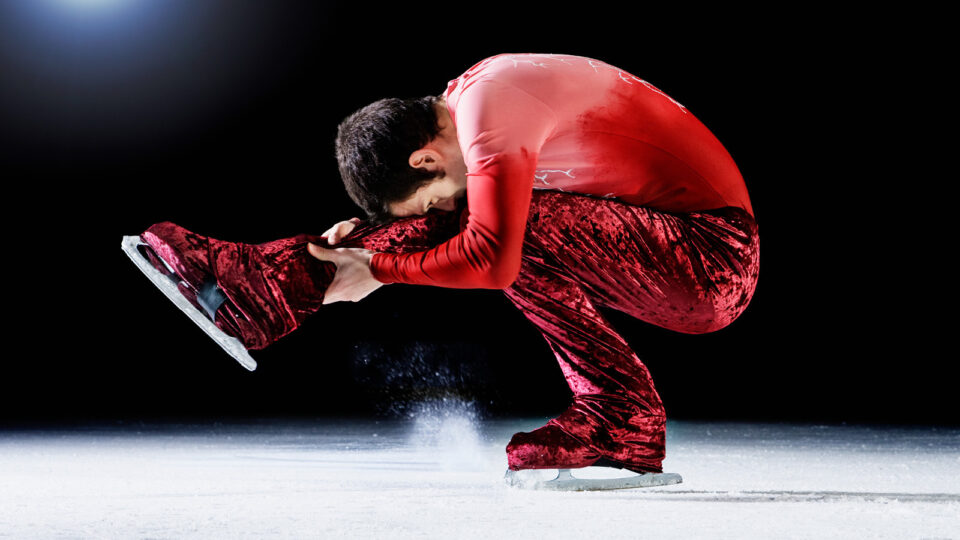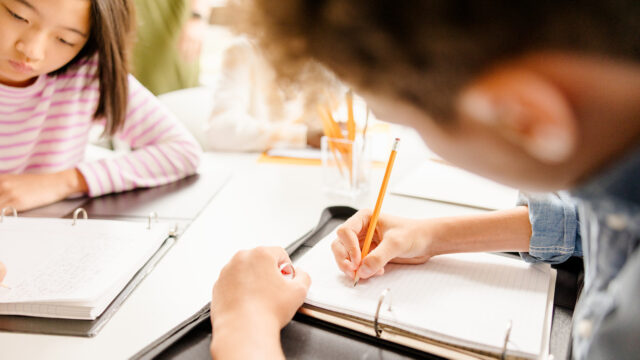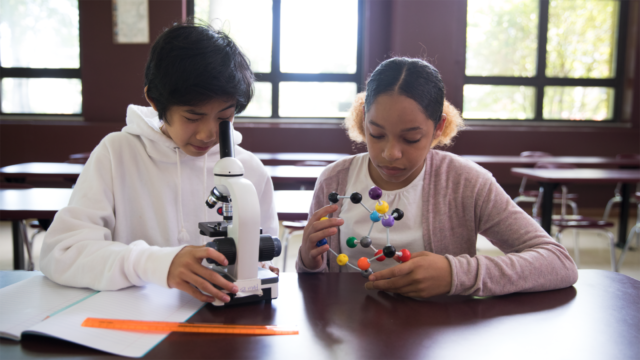
Find out with these free math in sports games and activities!
In the sports world, calculations and mathematical thinking are everywhere. This edition of Math at Work features seven activities that help illustrate to students some of the key roles that math plays in athletics—and beyond. Much of sports-related math involves being measured, in categories including speed, distance, repetitions in the gym, and calories, to name a few.
If you're looking to bring some Olympic action into your learning, explore the math Olympic activities below, part of our ever-growing collection of free activities.
Try these ready-to-use math summer and winter games activities
Although some of the activities that follow focus specifically on the summer or winter Olympics, the lessons apply year-round! After all, elite athletes face problems involving nutrition, data analysis, and goal setting, which apply across practically all sports.
Activity 1: Javelin Analysis
In this activity for Grades 6–8, students analyze videos of javelin throws and graph the relationship between angle and distance. (Specific to Summer Games)
Activity 2: Snow Angles
In the previous activity, students analyze the relationship between angle and distance of a javelin throw. Javelin throwers are not the only athletes making use of angles though! In fact, all sports—whether played during the winter or summer—incorporate angles in some way. Consider the ski jump. You can repurpose Javelin Analysis but with ski jumping instead. Have students search for videos of ski jumps and pause them while the jumpers are mid-air. Students should measure the angle between the two skis. Then they can create a graph of angle (horizontal axis) vs. distance (vertical axis). Each student can collect multiple data points, or you can have the whole class find data points and have students graph all of them. Does there appear to be a relationship between the angle of the skis and the distance of the jump? What are some other angles that students could test besides the angle between the two skis? (Specific to Winter Games)
Activity 3: Post-Workout Smoothie
In this activity for Grades 4–6, students create an athlete, research the nutritional information of different ingredients, and use that information to make the perfect post-workout smoothie for their athlete. (Applies to Summer or Winter Games)
Activity 4: Medal Functions
In this activity for Grades 7–9, students research data about Olympic and/or Paralympic medals won by different countries, and then build a graph based on their findings. (Applies to Summer or Winter Games)
Activity 5: Setting Goals
In this math Olympic games activity for Grades 6+, students set a goal and track their progress. For students who are first learning about rates, the activity not only shows a real-world example, it also helps improve their lives along the way. For older students, the activity has a high ceiling and can contextualize topics including multivariable functions and nonlinear approximations. (Applies to Summer or Winter Games)
Activity 6: Athletic Scavenger Hunt
Get your students watching the Games with a critical eye! Create a list of math objects to hunt for. The list can be created for students at a foundational math level (basic shapes, numbers 1–10) or adapted to include more advanced content. Consider the following lists to check off while watching the Olympics, and feel free to create your own. Encourage students to both watch the sports on the screen and also listen to the commentary!
- Angles (obtuse, acute, right, 180°, greater than 180°)
- Number types (decimal, fraction, negative, prime, composite)
- Place value (thousands, hundreds, tens, ones, tenths, hundredths, thousandths)
- Mathematical vocabulary (“equal,” “less,” “greater,” “approximate,” “function,” “slope,” “fraction”)
Look closely at what you're teaching right now. What words and concepts might show up during an Olympic sport? (Applies to Summer or Winter Games)
Activity 7: Paralympic™ Hopeful
In this activity for Grades 4–5, students work in small groups, drawing a bicycle and a track and then racing the bicycle around the track. They graph data to see how close they can get to pacing themselves like an elite cyclist. To do this activity virtually, have students try on their own using a digital timer and then report back with their data. (Specific to Summer Games)
***
Learn more about the Math at Work web series: you and your students will watch industry leaders work with real students to demonstrate the importance of math in jobs across the globe.
Olympic® and Paralympic™ are trademarks or registered trademarks of the United States Olympic and Paralympic Committee. This blog post, originally published in 2020, has been updated for 2022.
Get our FREE guide “Optimizing the Math Classroom: 6 Best Practices.”





















